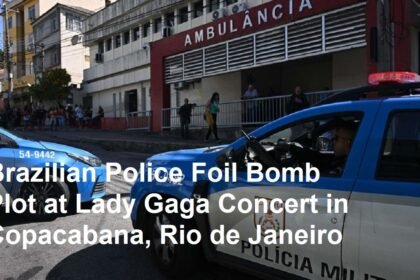Vatican City – May 7, 2025: Cardinals from across the globe convened in Rome on Tuesday to commence the 267th papal conclave, a secretive and solemn process to elect the next leader of the Catholic Church. The assembly follows the unprecedented resignation of Pope Francis II in April 2025, citing declining health and a “call to spiritual renewal.” With 121 cardinal-electors sequestered within the Sistine Chapel, the historic vote unfolds at a pivotal moment for the 1.3 billion-member Church, grappling with internal divisions, declining congregations in the West, and rising demands for reform.
The Conclave Begins
Under Michelangelo’s iconic frescoes, the cardinals swore oaths of secrecy at 10 AM local time, pledging silence on all deliberations. The ritual, steeped in tradition, includes burning ballots after each vote—black smoke for indecision, white smoke signaling Habemus Papam (“We have a Pope”). This conclave marks only the second time in modern history that a pope has resigned, echoing Benedict XVI’s 2013 departure.
Speculation swirls around potential candidates, or papabili, with insiders suggesting the College of Cardinals is divided between reformers advocating for transparency and traditionalists prioritizing doctrinal orthodoxy. “The Church stands at a crossroads,” said Cardinal Matteo Zuppi of Italy, a moderate voice. “The next pope must bridge generations and continents.”
Global Challenges
The new pontiff will inherit a Church confronting existential crises. In Europe and North America, attendance has plummeted amid secularization and clerical abuse scandals. Meanwhile, congregations in Africa and Asia are booming, fueling calls for a non-European pope. Climate change, economic inequality, and interfaith tensions also dominate the agenda.
Cardinal Dieudonné Nzapalainga of the Central African Republic, a prominent advocate for peace in conflict zones, emphasized the need for a “pastoral, not political” leader. “The world is fractured. The pope must be a healer,” he told reporters.
Contenders for the Papacy
Though conclaves are notoriously unpredictable, several names circulate as frontrunners:
- Cardinal Péter Erdő of Hungary: A conservative intellectual, favored for his diplomatic acumen and adherence to traditional teachings.
- Cardinal Luis Antonio Tagle of the Philippines: A charismatic reformer popular in the Global South, known for championing social justice.
- Cardinal Sarah Conte of Guinea: A rising star advocating for African representation and climate action.
- Cardinal Christoph Schönborn of Austria: A centrist seen as a bridge between factions, with ties to Benedict XVI’s legacy.
Vatican analyst Marco Politi noted, “This is the most geographically diverse conclave ever. The choice will signal whether the Church embraces its future in the Global South or retreats to old strongholds.”
Historical Context
The 2025 conclave follows a century of transformative papacies: John Paul II’s global evangelism, Benedict’s intellectual rigor, and Francis’s emphasis on mercy and environmental stewardship. Francis’s resignation, however, has reignited debates over papal accountability. Critics argue lifetime tenure is unsustainable, while traditionalists warn term limits could politicize the office.
Public and Faithful Reactions
Thousands of pilgrims gathered in St. Peter’s Square, praying for divine guidance. “We need a pope who listens,” said Maria López, a Spanish nun. Social media buzzed with hashtags like #NextPope and #Church2025, reflecting global engagement.
The conclave’s secrecy remains contentious. Reformists demand transparency, but Vatican spokesman Matteo Bruni defended tradition: “This is a spiritual process, not a political campaign. The Holy Spirit guides.”
Diversity and Inclusion
For the first time, 22% of voting cardinals are from Africa, and 18% from Asia, underscoring the Church’s shifting demographics. Yet only six women, all non-voting auditors, attend the pre-conclave meetings, highlighting persistent gender disparities. Sister Nathalie Becquart, a French synod official, urged gradual change: “The Church must walk with the world, even if it walks slowly.”
Moving Forward
The conclave requires a two-thirds majority (81 votes) to elect a pope. If no consensus emerges after 12 days, a simple majority suffices—a rule critics fear could empower factional maneuvering.
As night fell, black smoke drifted from the chapel chimney, signaling no decision on the first ballot. The world now waits, aware that the outcome will shape not just Catholicism but global moral leadership in an era of uncertainty.









